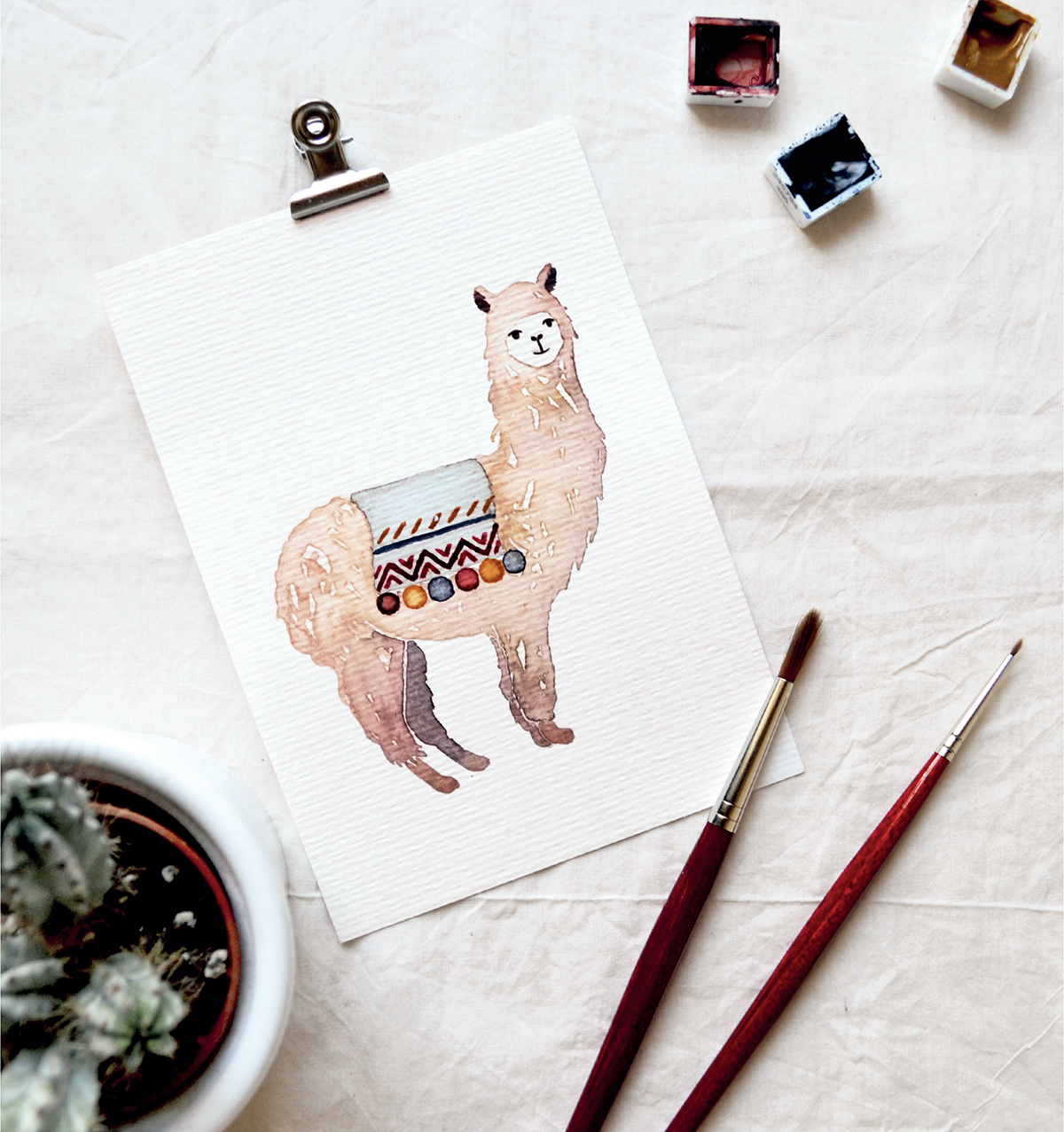
Receiving personalized post from your friends and family is wonderful. Tell your loved ones about your adventures or talk about fascinating travels with this alpaca postcard. One thing is certain — an alpaca would definitely make a fantastic traveling companion.


My color palette for this project. See My Materials
1Draw your sketch in the center of the paper as the alpaca is going to be the centerpiece of your postcard. Start with the alpaca’s oval-shaped body in the middle of the page and slowly work in the neck, head and legs.
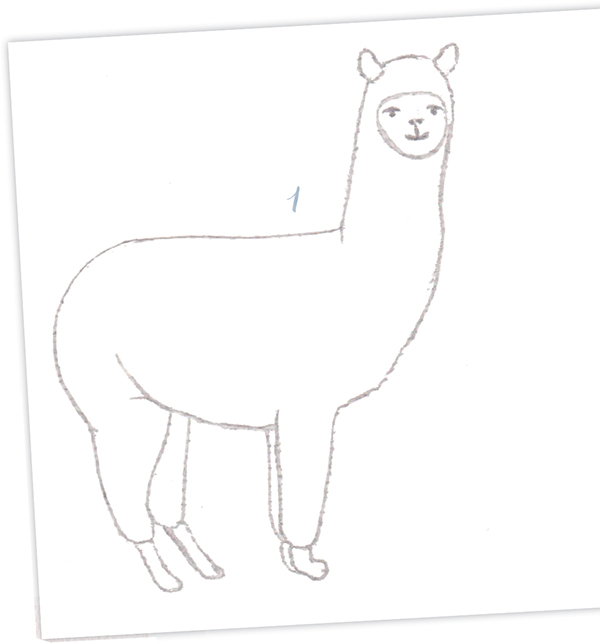
2When you’ve finished the body and are happy with it, draw in a rectangular throw over the alpaca’s back. For a more dynamic impression, the edges should be swinging slightly in one direction. Draw some geometric patterns over the throw in any way you like, to make it look like a traditional piece of Peruvian handicraft. Finally add some medium-sized bobbles to the lower edge of the throw.
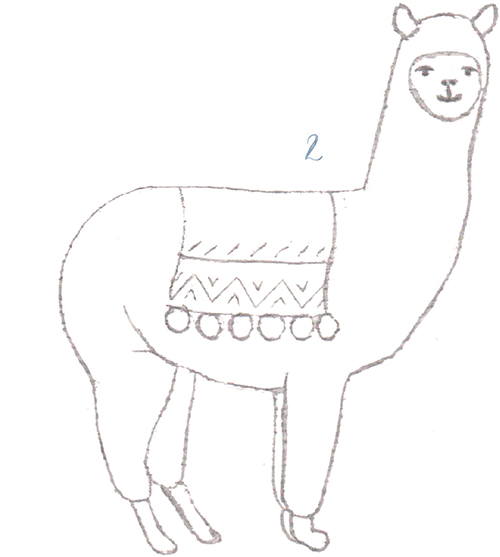
3Gently rub out the pencil sketch to ensure that the lines don’t show through the paint. I used brush size no. 3 and yellow raw ocher and mahogany brown for the fur. Mix the paint with sufficient water so that the individual brush strokes will run into one another to give an impression of the alpaca’s shaggy coat. Apply the paint downwards in short curving brush strokes. Add a darker tone to the shadow areas of the alpaca, such as the under belly or in between the legs. This is best done while the fur color is still wet. All this will make the alpaca look more lifelike.
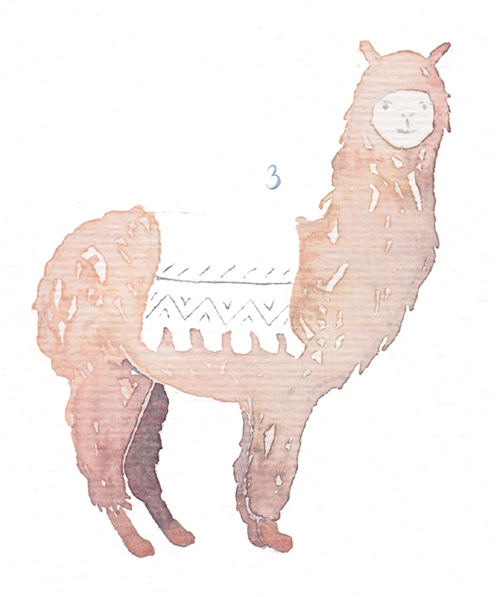
Leave small gaps here and there in the fur. This will make the alpaca’s coat appear more natural.
4When the fur is dry, paint a base layer on the throw in a light transparent gray tone. Draw in the lines of the alpaca’s face with a thin black fineliner pen.
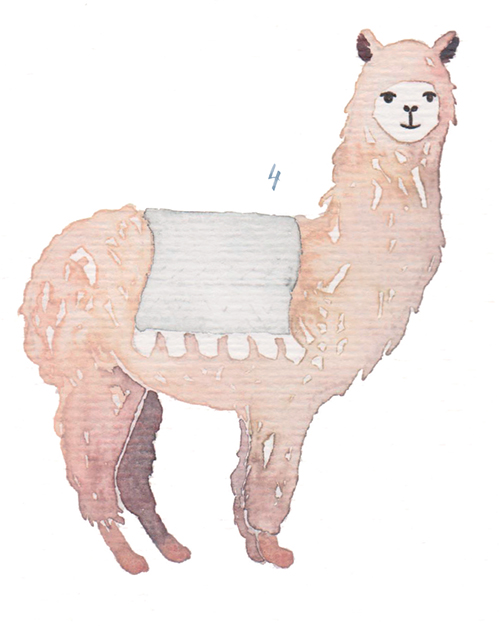
5Once the alpaca’s throw is dry you can start to paint the patterns with lightly diluted paint. Use a particularly thin brush for this, for example a size 5/0, so that the patterns don’t run into each other and are clearly defined. The paint must not be mixed too thinly, otherwise it will run. Finally, color in the bobbles on the throw, alternating various colors such as red, yellow, and blue.
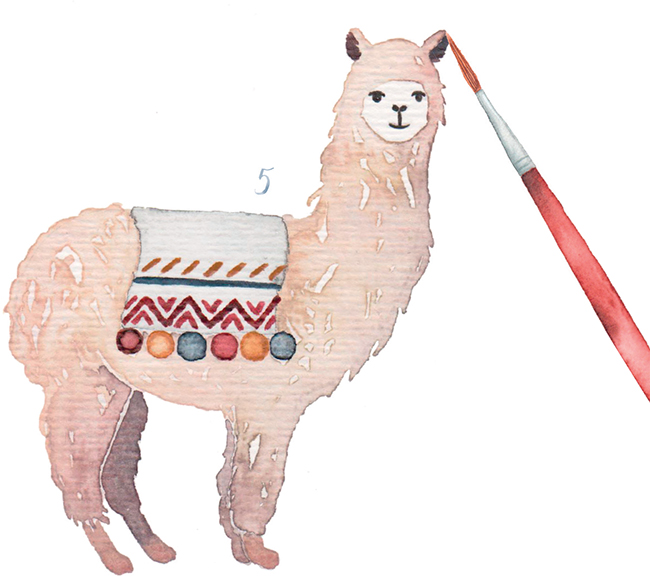
If you prefer the fur to be more defined and want the individual brush strokes to stand out more, work with less diluted paint so that the brush strokes are defined separately and do not merge.